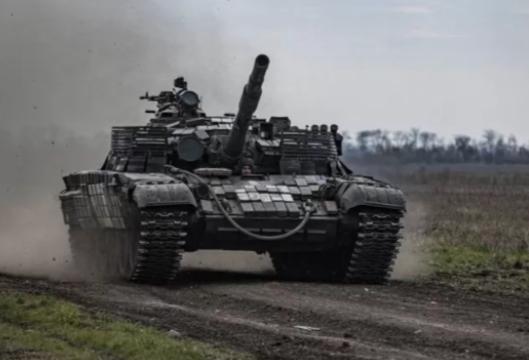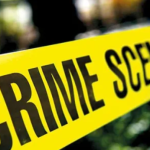While “Z” may symbolize Russia’s invasion, a triangle represents Ukraine’s boldest attempt to push back. These triangles are taped or painted on the sides of every supply truck, tank, or personnel carrier heading toward the Russian border in the Sumy region.
This offensive has reclaimed hundreds of square kilometers of Russian territory, significantly boosting momentum and morale in Ukraine’s war effort. The Russian official responsible for the border region of Kursk has reported that 28 settlements are now under Ukrainian control, prompting nearly 200,000 Russians to flee their homes.
Tomash has just returned from Ukraine’s cross-border mission, accompanied by his comrade “Accord,” who casually remarked that it was “cool.” Their drone unit spent two days preparing for the cross-border incursion.
“We had orders to come here, but we didn’t know what that meant,” Tomash admits as he pauses for a coffee at a petrol station.
“We suppressed the enemy’s means of communication and surveillance in advance to clear the way.”
The exact amount of Russian territory that has been seized remains uncertain, and there is skepticism regarding Commander-in-Chief Oleksandr Syrskyi’s claim that 1,000 square kilometers are under Ukrainian control.
On Tuesday, Russia’s defense ministry insisted that Ukrainian attempts to advance further had been thwarted, but they have been proven wrong in the past. Regardless of the reality on the ground, it seems that Kyiv is committed to this military gamble.
The level of activity in the neighboring Sumy region is something I haven’t observed since the liberations of 2022, which brought a sense of momentum to the Ukrainian efforts.
This shift is undoubtedly a welcome change from the protracted war of attrition that has characterized the past 18 months, but labeling it a success or failure would be premature.
The objective of this offensive is unclear, although President Volodymyr Zelensky has mentioned targeting sites from which Russia can launch attacks on Ukraine and bringing “a just peace” closer.
It is evident that Kyiv is deploying some of its best troops. Fit soldiers gather around vehicles that reflect their muscularity, though most politely decline to comment. Some appear exhausted.
Through the Telegram messaging app, a soldier still in Russia has informed us that months of planning went into forcing Moscow to redeploy troops from other parts of the front line in Ukraine.
“The element of surprise worked,” he says. “We entered easily with little resistance. On 6 August, the first groups crossed at night in several directions.”
“Almost immediately they reached the western outskirts of the city of Sudzha,” he adds.
With operations like this, secrecy suits the soldiers carrying them out. The same cannot be said for civilians.On both sides of the border, tens of thousands are being evacuated after an increase in air strikes and fighting.
“The Russian civilians we encounter don’t resist,” explains the soldier. “We don’t touch them, but they either treat us sharply, negatively, or not at all.”
“They also deceive us about the positions of Russian troops,” he adds.


